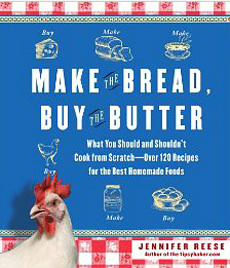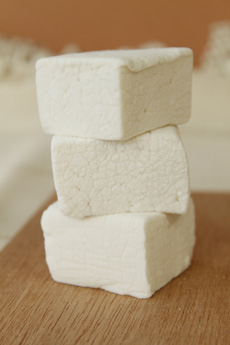|
Roast Garlic
Roasting heads of garlic is the simpler of the methods.
Preheat the oven to 350°F.
Slice horizontally into the top of a bulb (also called a head) of raw garlic, stopping before you cut completely through, to leave a “hinge.” Then close the hinge and wrap the entire head in aluminum foil.
Place the packet in the oven and bake for at least forty-five minutes. It’s ready when you can squeeze the bottom of the head and the sweet, caramel-colored garlic oozes out the top like toothpaste.
Roast garlic is a hearty side with roasted meats and poultry. You can eat it from the clove or squeeze it onto bread, toast or directly onto your fork. You can give each garlic lover his/her own roasted garlic bulb or share a number of bulbs.
If roast garlic becomes a family favorite, consider a baking dish specially designed with a garlic theme—or an electric countertop garlic roaster.
Garlic Confit
Using peeled garlic cloves instead of the whole bulb, the confit* method develops a flavor similar to roasting, while bringing out the garlic’s sweetness. The garlic-flavored oil that remains after cooking is incredibly useful as a quick flavor booster in almost any recipe that requires oil—including a vinaigrette for the meal’s salad course, marinades or bread-dipping.
Because you can freeze or refrigerate the confit for future use, feel free to make a lot at one time.
First, a trick to peel the cloves: Soaking the unpeeled cloves in cold water for five minutes loosens the skin and make it much easier to keep the cloves intact while peeling. Slice off the root and tip with a sharp paring knife, then use the knife to lift off the papery skin.
Preheat oven to 225°F.
Place peeled garlic cloves in an oven-safe dish with high sides (a small casserole dish works well), then cover completely with olive oil. Stir lightly to make sure the garlic is completely submerged in oil.
You can also add aromatics (herbs such as chives, parsley, rosemary, sage, tarragon and thyme), lemon zest, or chiles to the oil.
Cover and bake for at least an hour, or until the cloves become soft enough to squish effortlessly between your fingers.
Remove from the oven and strain off the oil into an airtight jar or other container. Store the garlic in the fridge. The oil can stay at room temperature.
Use the garlic confit as a topping or side garnish for meat, poultry and grilled fish; with eggs; to top burgers and sandwiches; as part of a condiment tray with pickles; or any way that inspires you. One of our favorite uses: mash the confit into mashed potatoes, for a yummy “garlic mashed potatoes.”
FOOD 101: ELEPHANT GARLIC
What is elephant garlic? It‘s bigger in size, but does it have more flavor, too?
No: It’s just the opposite. Elephant garlic is more closely related to the leek than to garlic. It may look like an enormous bulb of garlic (some can weigh as much as a pound), but it has only a very mild garlic flavor and a texture that’s more potato-like.
Use it when you want only a subtle hint of garlic (in soups and stews, for example), slice it raw into salads or lightly sauté it as a garnish (be careful not to overcook—it can turn bitter).
*Confit is a method of preservation whereby something (usually meat, as in duck confit) is cooked slowly in fat (in the case of duck confit, in its own fat). It is then submerged and stored in the fat, where it will last for months. This method of preservation was used extensively prior to the availability of refrigeration.
|




